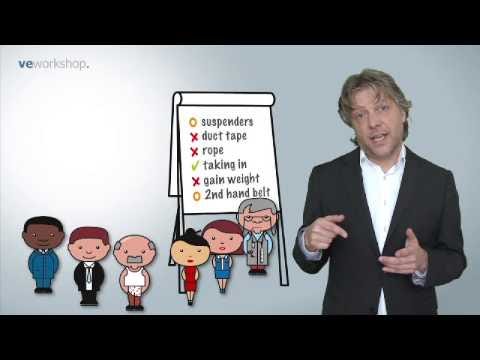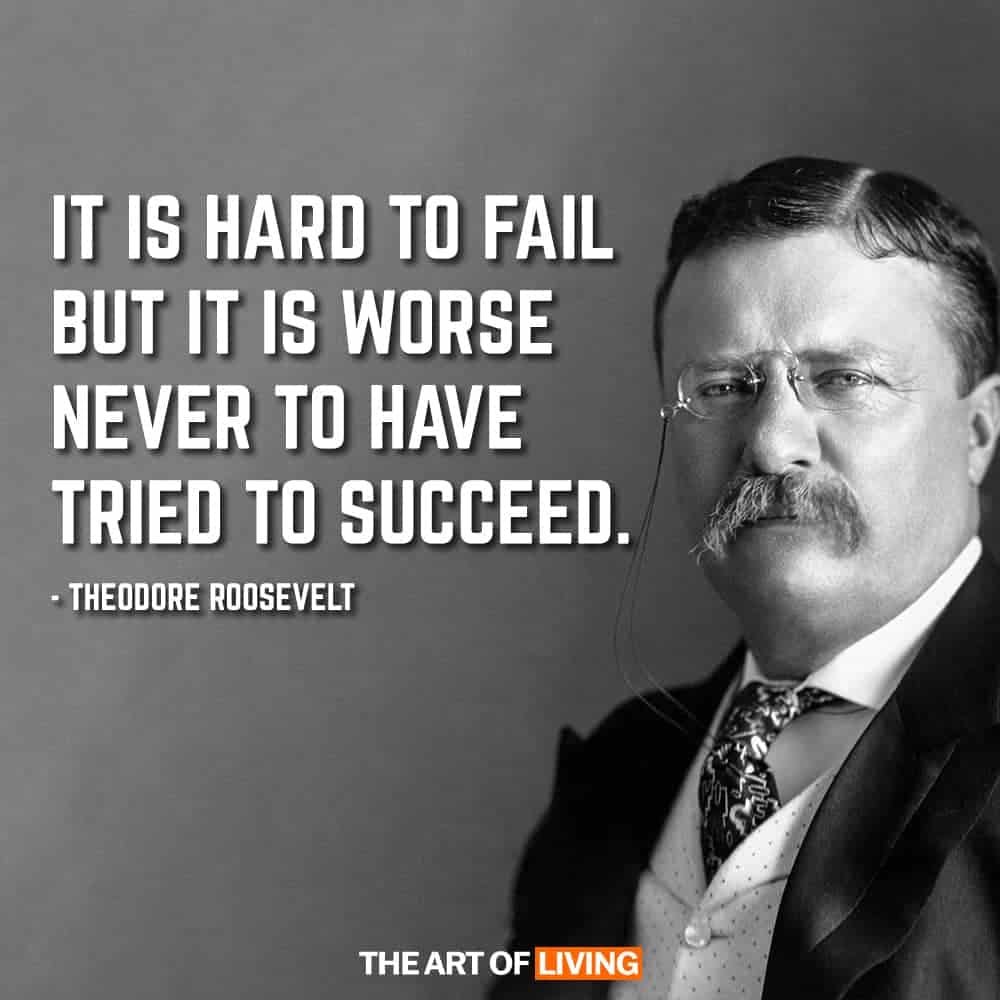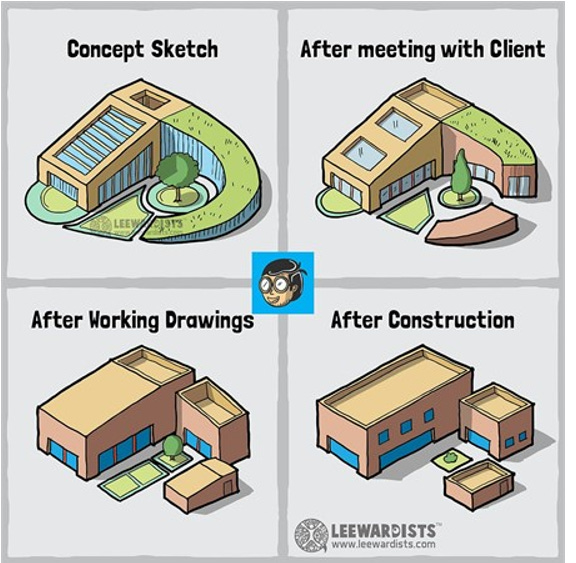Hey! Happy Saturday! Matt here.
Welcome to the Construction Curiosities newsletter. Especially to all the 23 New Subscribers!
Welcome and Thank You for your Support.
Last week I tried a shorter and sweeter version of the Newsletter and asked LinkedIn for their thoughts. A few liked it but the majority of the feedback received was like this:
Sooo, We are back this week at full strength!
Summary
This week we will look at:
One Musing: True Value Engineering
One Video: VE Workshops Illustrated by a Pants Problem
One Quote: Teddy Wisdom
One Meme: Value Engineering Truth
One Musing
*If you are new here, my musings are oversimplified “Construction Yeti” Hot Take explanations of the topic. In an effort to keep things concise, I’m leaving out many of the intricacies but the intention is to maybe pique your Curiosity about the topic to go do more research.*
Value Engineering or VE is one of the most misunderstood topics in Construction Management. Everyone has heard of it. Many have used the term and “done” the exercise. Few have done the process properly.
Value Engineering IS NOT cutting scope to get the project within Budget. The industry’s lazy solution to budget issues is to say: “Sorry Owner, you’re building can only be 7 stories tall instead of the 8 you wanted & needed” or “Sorry, we can’t include the swimming pool in your Hotel project.”
In order to understand what “VE” is you have to understand what “Value” means here.
Think of Value to be defined as Value = Benefit/ Cost.
As with any ratio math formula, there are 2 ways to increase value here (WITHOUT REDUCING SCOPE).
Decrease Cost while holding the Benefit constant.
Increase the Benefit while holding the Cost constant.
Or the most desired (and magical) outcome is to reduce Cost while also increasing the Benefit. 🤩 🏆
Value Engineering IS finding innovative and alternative solutions to complete the Owner’s desired project scope.
Before you say, “This is BS!! ALL owners just have unrealistic expectations.”
I’ll say, “Sometimes yes. But many times we (as an industry) are just plain lazy.”
We draw something up. Get pricing and if it comes in over-budget we start deleting scope. “Sorry Owner, the economy… blah blah, you see.. COVID has impacted… blah blah..”
It’s a topic for another day but this is also a reason it is VERY important to produce Cost Estimates at each stage of Design. Most Architect’s contracts say they are to do that. (spoiler: few do it)
Assuming a Design- Bid- Build project here: If you are just praying the design will come in within budget on bid day, you are asking for trouble. You must have a finger on the pulse of your cost the entire design process. And VE is most effective if done the earliest in the Design as possible.
It’s a little late to be redesigning and VE’ing things after bid time. Best case scenario you have a schedule delay as you redesign. But we know after the project is bid, the competitiveness in the pricing is no more.
One other point to make, as my buddy and colleague Dhinaker said, you have to evaluate the full life cycle of a building.
There’s not a lot of value if your building starts to fall apart just a few years after completion no matter how much you saved on the construction.
To get your mind running, here are some types of VE Ideas that are common on most projects:
Check if your MEP system specifications call for unnecessary bells and whistles that will driving your equipment cost up (and lead times!)
Keep it simple, but functional and safe. Don't overcomplicate the building design.
Check into lower-cost finish materials. Do you really need that Ethiopian Desert Mahogany wood ceiling? Or would Stained Cedar be okay?
Don't add unnecessary features or components that'll just make things more complicated to build and ultimately maintain.
Think about the workflow and optimize the building layout to minimize waste.
Use pre-made parts or modular construction techniques to save on labor and materials.
Embrace technology like Building Information Modeling (BIM) to help with coordination and reduce errors.
Make sure you're using the right project delivery method that suits your needs and budget.
Use energy-efficient HVAC and lighting systems to save money on energy bills.
Find Incentives on both New Construction and Existing Building Retrofits at IncentiFind. They have a database of 540,000+ tax credits, grants, fee waivers, rebates, bill credits, and more.
If nothing else, I hope through this quick GIF’d explanation you understand a little bit about what the process of Value Engineering actually is about. But more importantly what it is not!
Thoughts??
Pop Quiz Trivia Question
When was the first home air conditioner invented?
A. 1840
B. 1904
C. 1929
D. 1957
Answer is at the bottom of the Newsletter
One Video
The most effective way to go through the Value Engineering process is to hold a VE Workshop.
In order to keep things brief, I’ll share this 3-minute video about Johnny’s briefs explaining the basics of how a VE workshop works.
If you are looking for more info on the VE process or how to implement a VE workshop, just let me know!
One Quote
Teddy is full of great quotes that’ll make you stop and reflect on your goals and execution towards your goals.
One Meme
Tell me that’s wrong. I’ll wait.
Trivia Answer
When was the first home air conditioner invented?
C. 1929
To learn more about the history of Air Conditioning than you ever wanted to know; Check out this History of Air Conditioning Post from energy.gov
Frigidaire introduced a new split-system room cooler to the marketplace in 1929 that was small enough for home use and shaped like a radio cabinet. However, the system was heavy, expensive and required a separate, remotely controlled condensing unit. General Electric's Frank Faust improved on this design, developing a self-contained room cooler, and General Electric ended up producing 32 similar prototypes from 1930 to 1931.
Home cooling systems got smaller after H.H. Schultz and J.Q. Sherman filed a patent for an air conditioning unit that could be placed on a window ledge. The units hit the market in 1932 but were not widely purchased due to their high cost.
Engineer Henry Galson went on to develop a more compact, inexpensive version of the window air conditioner and set up production lines for several manufacturers. By 1947, 43,000 of these systems were sold -- and, for the first time, homeowners could enjoy air conditioning without having to make expensive upgrades.













